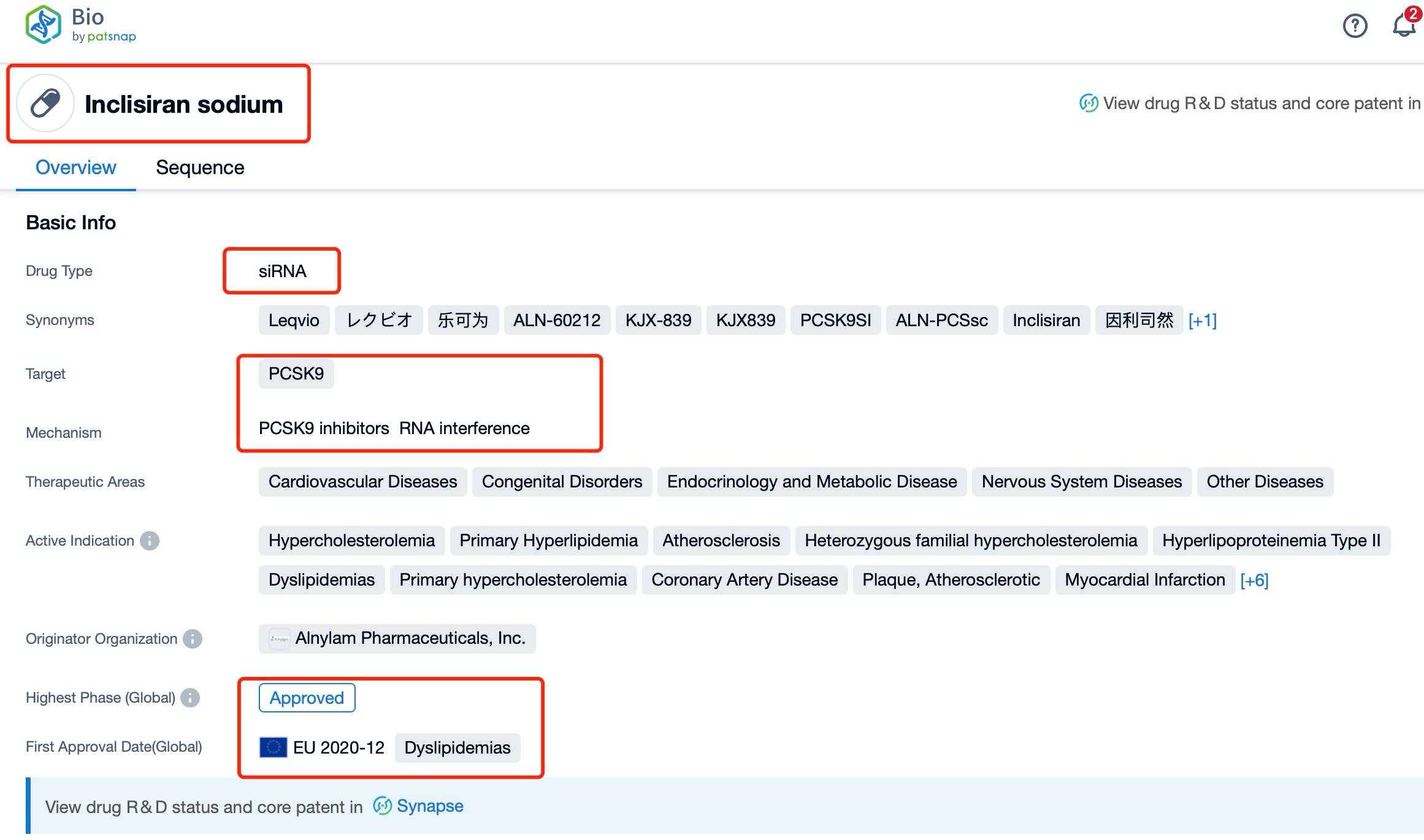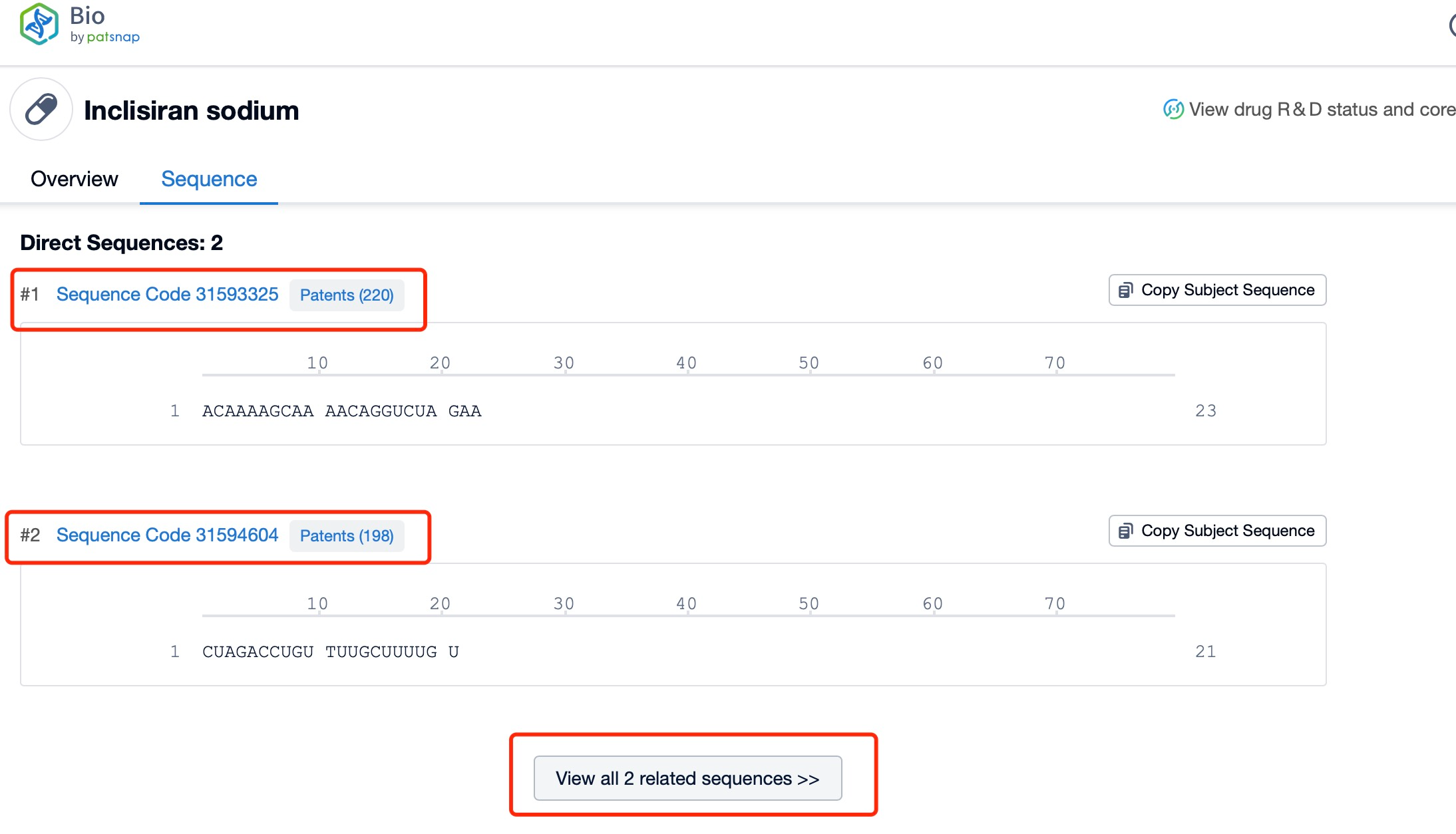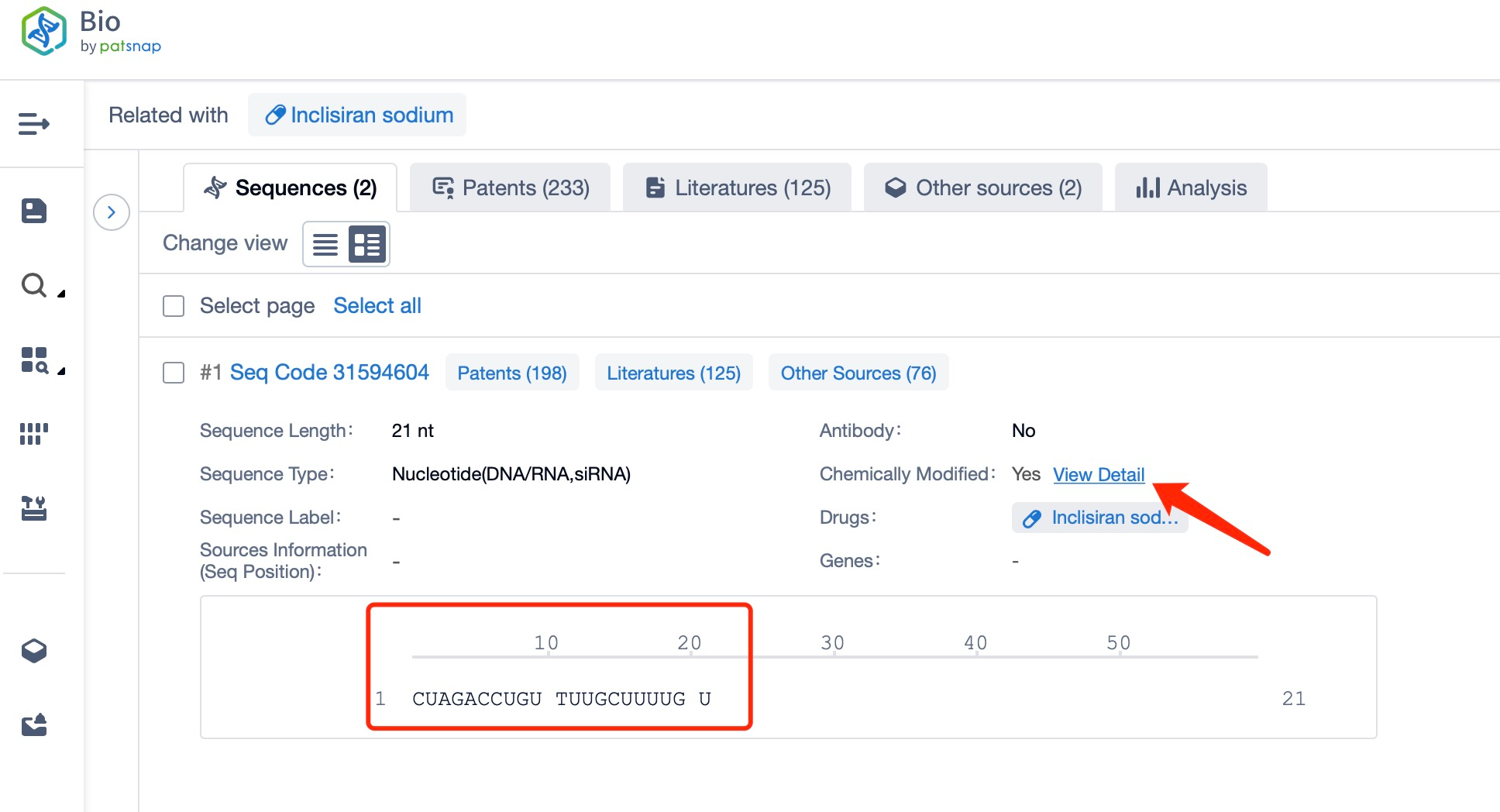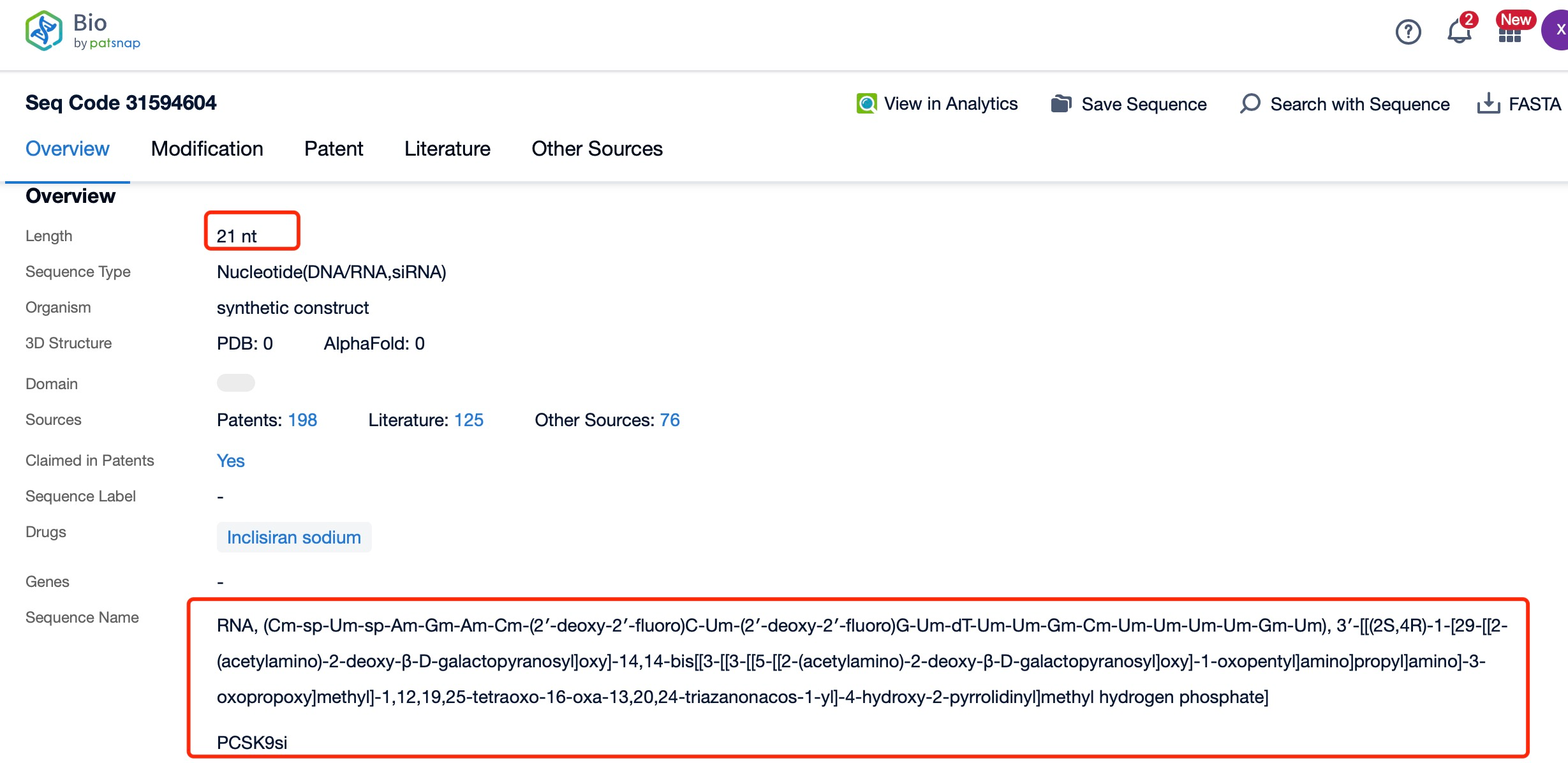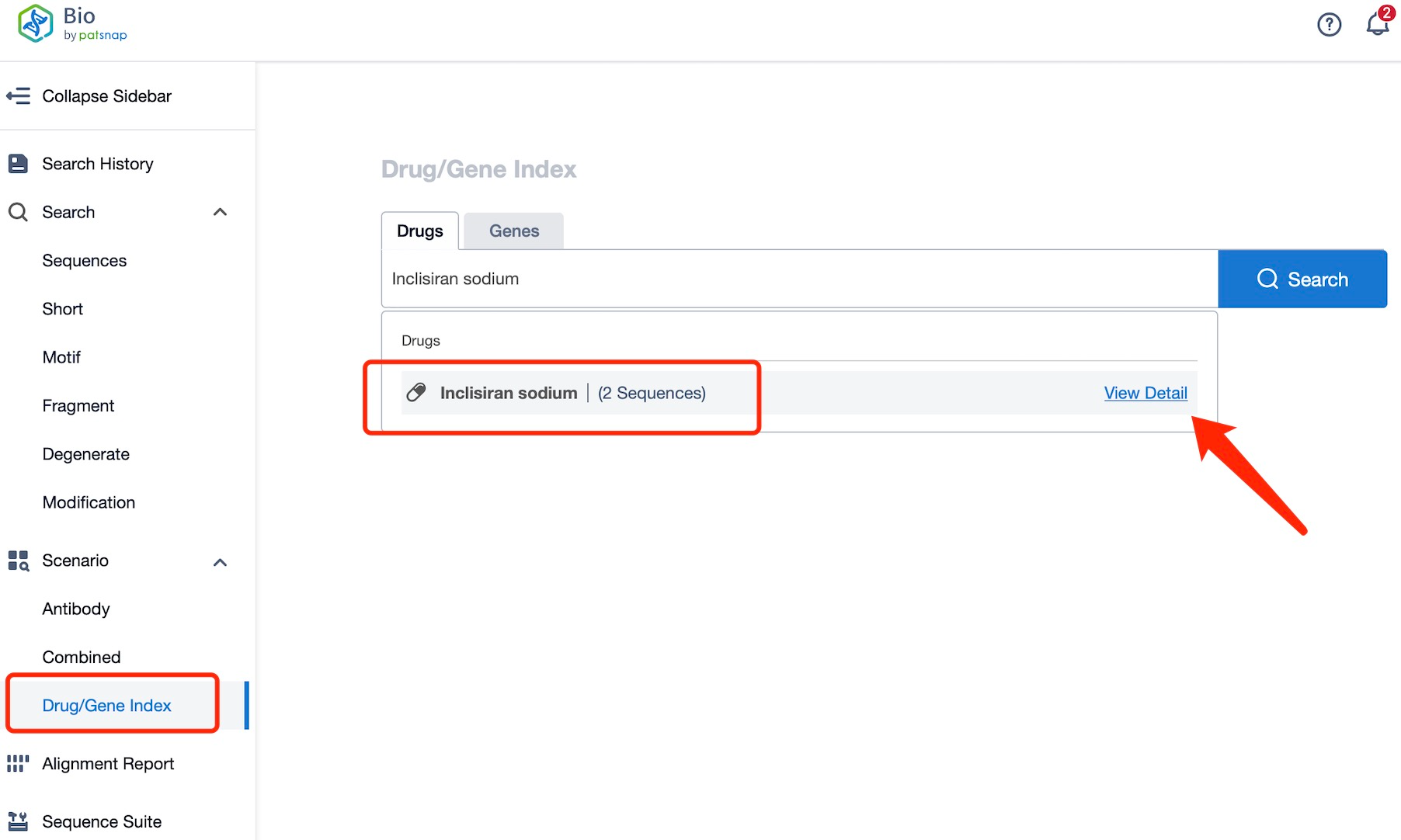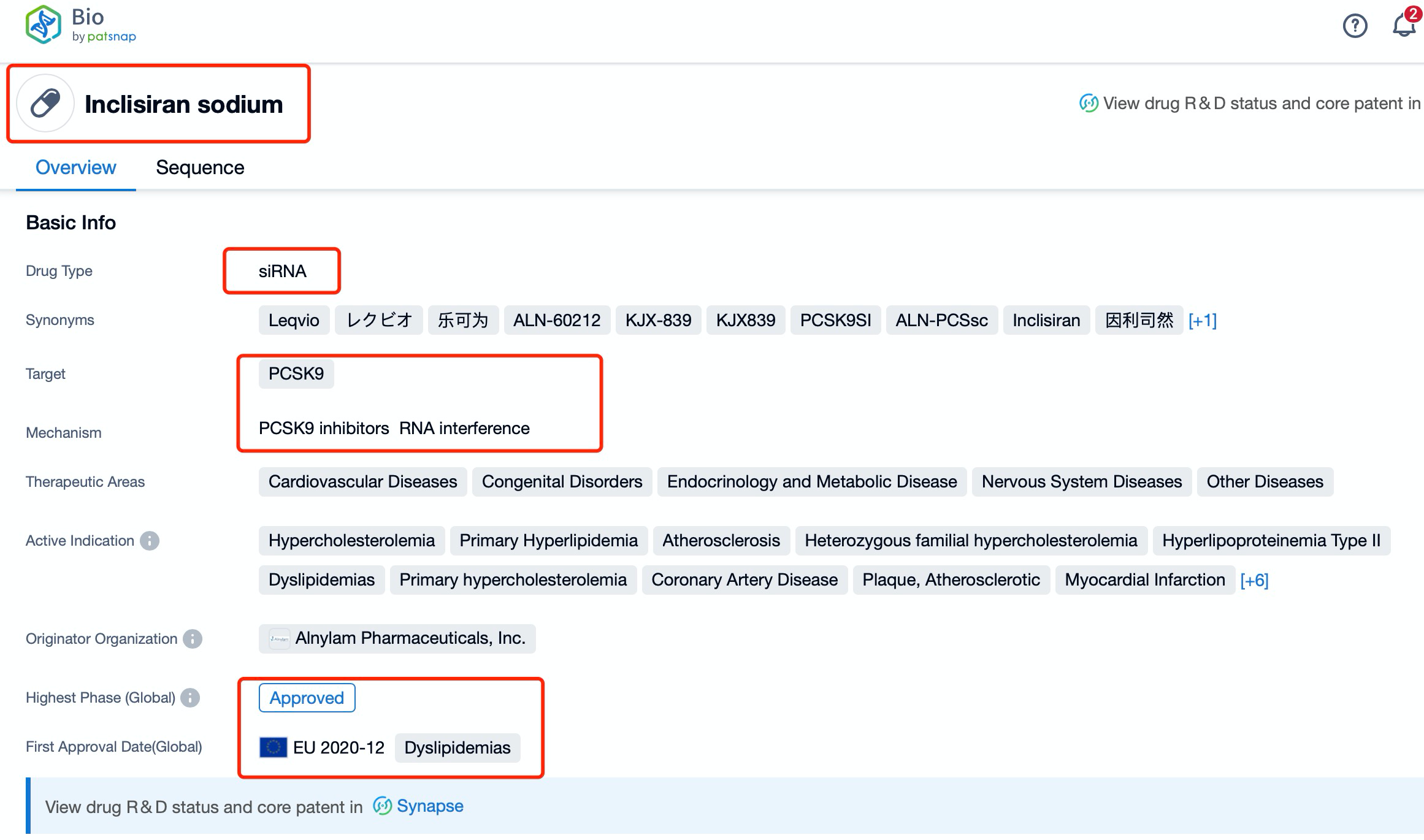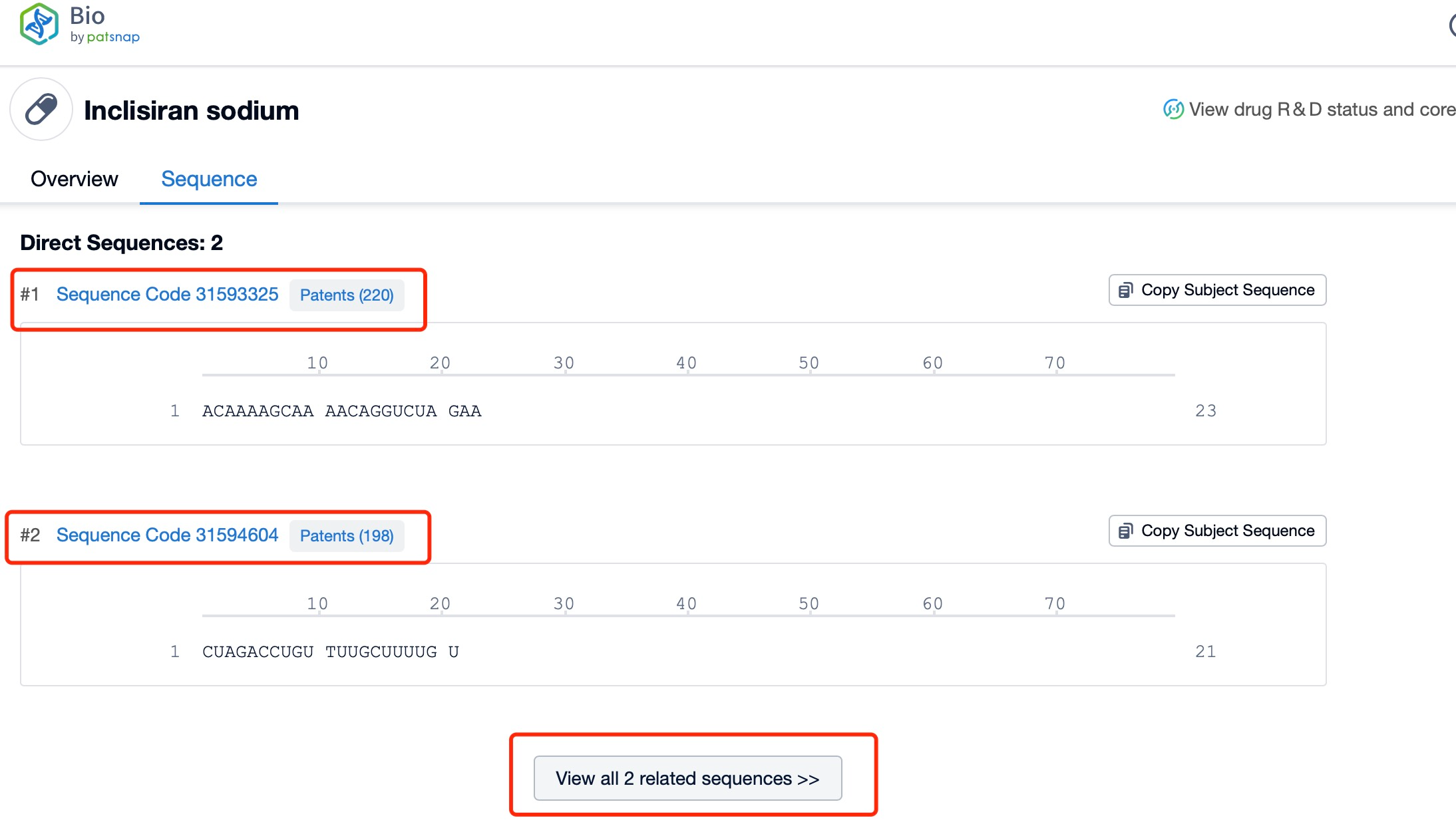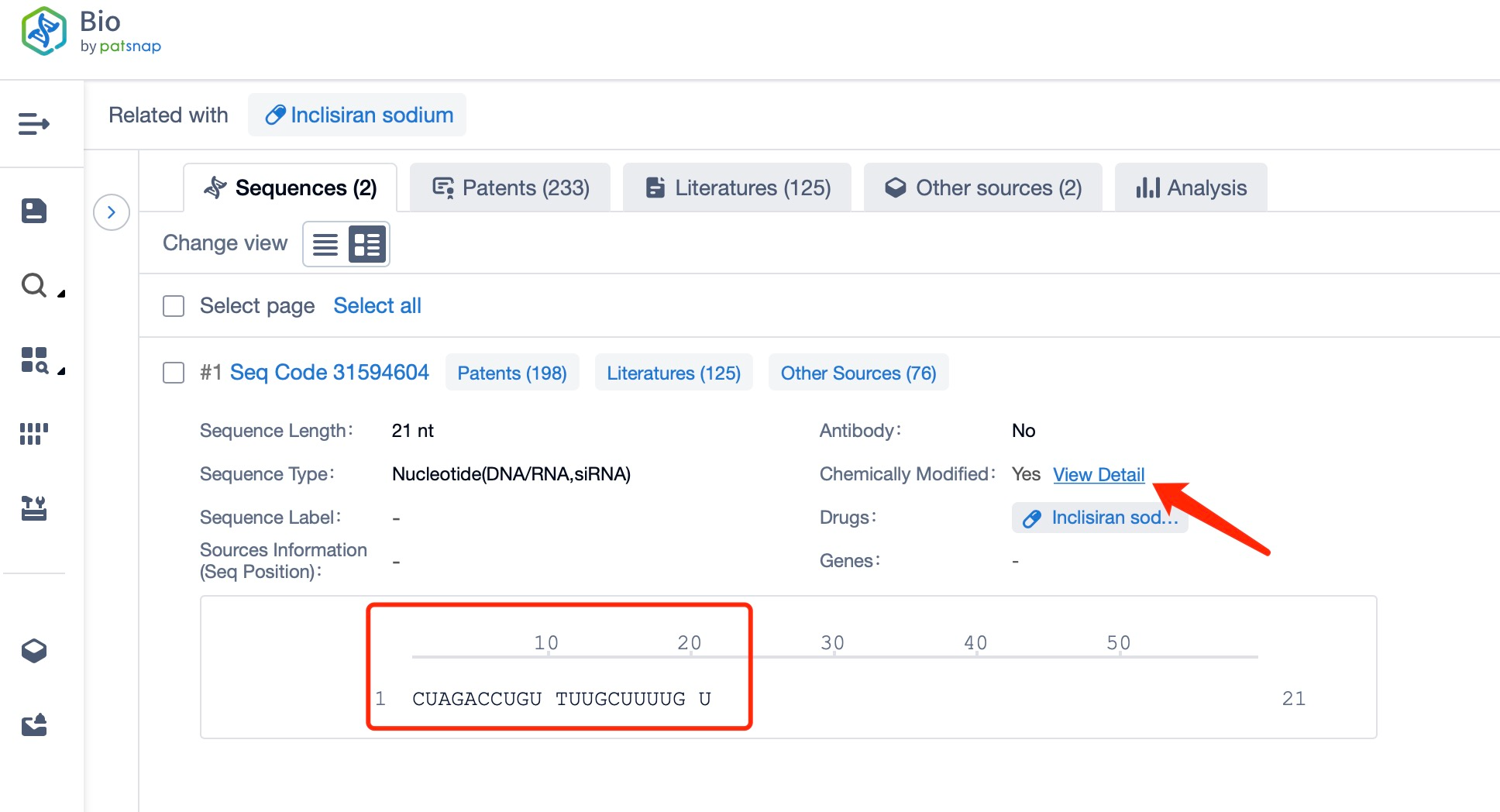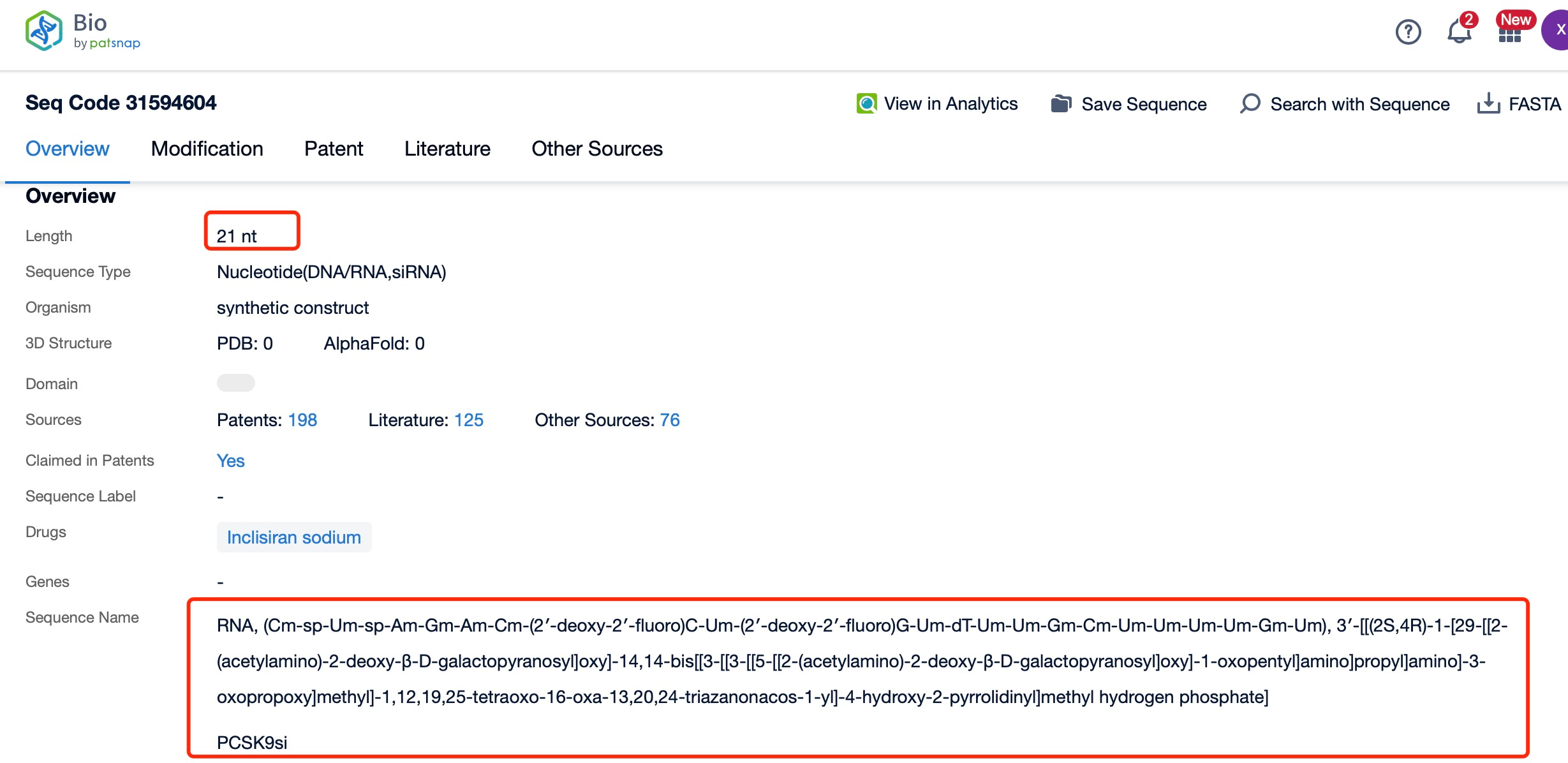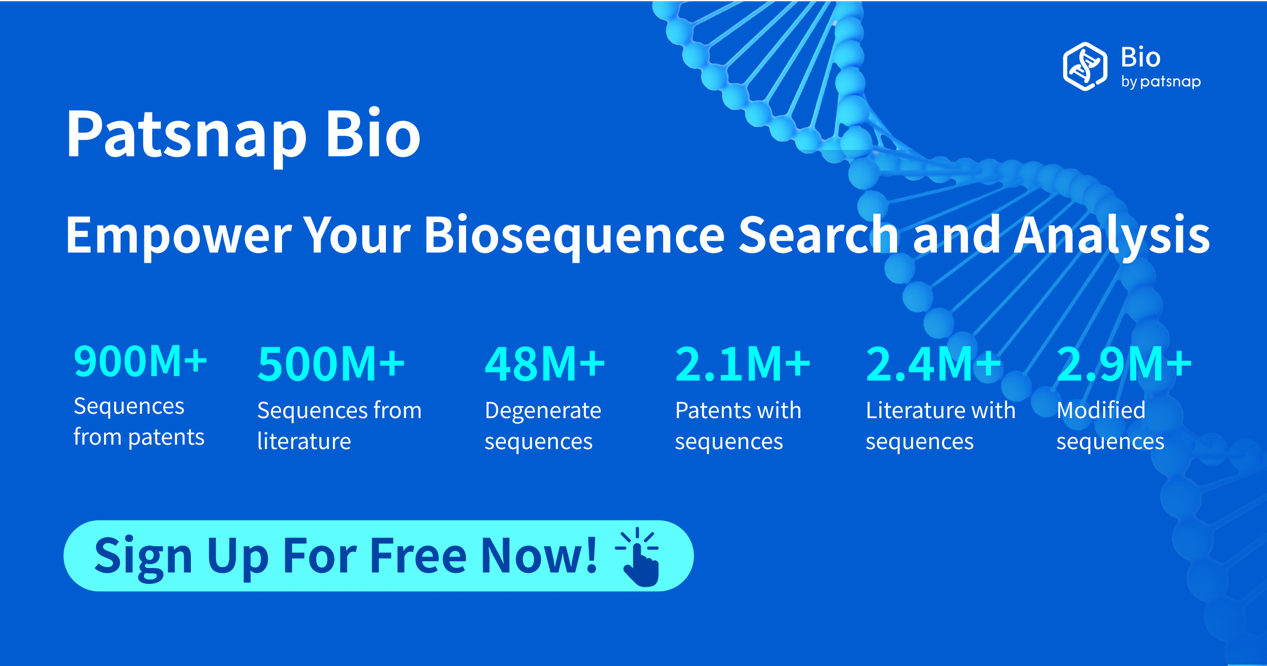How to find the chemical modification of Inclisiran sodium?
Inclisiran sodium is a novel small interfering RNA (siRNA) therapeutic developed by Alnylam Pharmaceuticals and commercialized by Novartis. Targeting proprotein convertase subtilisin/kexin type 9 (PCSK9), Inclisiran sodium is designed to treat primary hypercholesterolemia and mixed dyslipidemia, conditions characterized by elevated levels of low-density lipoprotein cholesterol (LDL-C), a major risk factor for cardiovascular disease. As an siRNA therapeutic, Inclisiran sodium represents a significant advancement in lipid-lowering treatments, offering a new and effective approach to managing these conditions.
Summary of Research Progress of Inclisiran sodium
The research progress of Inclisiran sodium has been marked by significant milestones and promising results. Mechanistically, Inclisiran sodium works by silencing the mRNA that codes for PCSK9, thereby reducing the production of the PCSK9 protein. This reduction in PCSK9 levels leads to increased expression of low-density lipoprotein receptors (LDL-R) on the surface of liver cells, enhancing the clearance of LDL-C from the bloodstream. Globally, Inclisiran sodium has received regulatory approval in several countries, including the United States, European Union, and China, under the brand name Leqvio. These approvals were based on robust clinical trial data demonstrating the safety and efficacy of the drug.
The global competition in the lipid-lowering market is intense, with several other therapies already available or in late-stage development. Notably, statins remain the first-line treatment for hypercholesterolemia, but they may not be sufficient for all patients, especially those with genetic predispositions or those who cannot tolerate high doses. Inotersen, another siRNA therapeutic, and monoclonal antibodies like evolocumab and alirocumab are also approved for lowering LDL-C. However, Inclisiran sodium offers a more convenient dosing schedule, requiring only two subcutaneous injections per year after an initial loading dose, compared to the frequent dosing regimens of other therapies. This improved dosing regimen enhances patient convenience and compliance, which is crucial for long-term management of chronic conditions like hypercholesterolemia.
Clinical research on Inclisiran sodium has been extensive and rigorous. The pivotal Phase 3 ORION trials, including ORION-9, ORION-10, and ORION-11, demonstrated that Inclisiran sodium significantly reduced LDL-C levels and improved cardiovascular outcomes compared to placebo. The ORION-9 trial focused on patients with heterozygous familial hypercholesterolemia (HeFH), while ORION-10 and ORION-11 included patients with atherosclerotic cardiovascular disease (ASCVD). The results showed a mean reduction in LDL-C of 52% at 18 months across the trials. Additionally, the safety profile of Inclisiran sodium was favorable, with no significant safety concerns identified. These positive findings have solidified Inclisiran sodium's position as a leading therapy in the lipid-lowering treatment landscape.
Sequence Information and Characteristics of Inclisiran sodium
The sequence information and characteristics of Inclisiran sodium are critical to understanding its mechanism of action and therapeutic potential. Inclisiran sodium is a chemically modified short interfering RNA (siRNA) that targets the mRNA of the PCSK9 gene. The siRNA is conjugated to a N-acetylgalactosamine (GalNAc) moiety, which facilitates liver-specific delivery. The GalNAc-siRNA conjugate is taken up by hepatocytes through the asialoglycoprotein receptor (ASGPR), ensuring efficient and targeted delivery to the liver, where PCSK9 is primarily produced. This targeted delivery minimizes off-target effects and enhances the drug's safety profile.
The siRNA component of Inclisiran sodium is a double-stranded RNA molecule, each strand 21-23 nucleotides long. The sequence of the siRNA is carefully designed to complement the target PCSK9 mRNA, ensuring precise and efficient silencing. The antisense strand is the active component that hybridizes with the target mRNA, leading to its cleavage and degradation. The exact sequence of Inclisiran sodium is proprietary and not publicly disclosed in full detail. However, it is known that the sequence is optimized to maximize binding affinity and minimize off-target effects. The sequence design takes into account the secondary structure of the target mRNA, ensuring that the siRNA can effectively access and bind to the target site.
Chemical Modification and Action of Inclisiran sodium
The chemical modifications of Inclisiran sodium further enhance its stability and efficacy. The siRNA component undergoes several modifications, including 2'-O-methoxyethyl (MOE) substitutions on the ribose sugar of certain nucleotides. These modifications increase the resistance of the siRNA to degradation by nucleases in the bloodstream, thereby extending its half-life and improving its stability. Additionally, the GalNAc conjugation improves the solubility and pharmacodynamic properties of the siRNA, allowing for a more stable and effective therapeutic molecule.
The action of Inclisiran sodium is mediated through the RNA interference (RNAi) pathway. Once inside the hepatocytes, the GalNAc-siRNA conjugate is processed by the RNA-induced silencing complex (RISC). The passenger strand of the siRNA is degraded, while the guide strand remains bound to the RISC. The guide strand then hybridizes with the complementary PCSK9 mRNA, leading to its cleavage and degradation. This process effectively silences the PCSK9 gene, reducing the production of PCSK9 protein and preventing the formation of LDL-C. The reduction in PCSK9 levels is sustained over time, providing long-lasting therapeutic benefits.
Summary and Prospect
In summary, Inclisiran sodium represents a significant advancement in the treatment of primary hypercholesterolemia and mixed dyslipidemia. Its unique mechanism of action, involving the targeted silencing of PCSK9 mRNA, offers a novel and effective approach to managing these conditions. The drug's favorable safety profile, combined with its convenient dosing schedule, makes it an attractive option for patients with hypercholesterolemia. With regulatory approvals in multiple regions and strong clinical trial data, Inclisiran sodium is poised to play a crucial role in the future of lipid-lowering treatment. Ongoing research and development efforts aim to further optimize the drug's therapeutic potential and explore its use in other related diseases, opening up new possibilities for patients suffering from cardiovascular and metabolic disorders.
How to find the chemical modification of all siRNAs?
In Patsnap Bio, you can find the sequence and latest research and development advances of all siRNAs.
Taking Inclisiran sodium as an example, first click on the Drug/Gene Index on the Patsnap Bio homepage. Here you can search for sequence information by drug and gene names. Enter ' Inclisiran sodium ' in the search box and click to view the details. On the details page, you can find the basic information and research progress of Inclisiran sodium.
Click "View all related sequences" below the sequence information to search for and retrieve all biological sequences similar to this information.
Clicking on the sequence name will provide you with all the basic information of that sequence.
Additionally, a visual diagram of the sequence's chemical modifications is available for immediate access.
Patsnap Bio helps you turn weeks into minutes with cutting-edge AI-enabled tools built to master the complexities of sequence retrieval and automate IP analysis with precision and ease.
